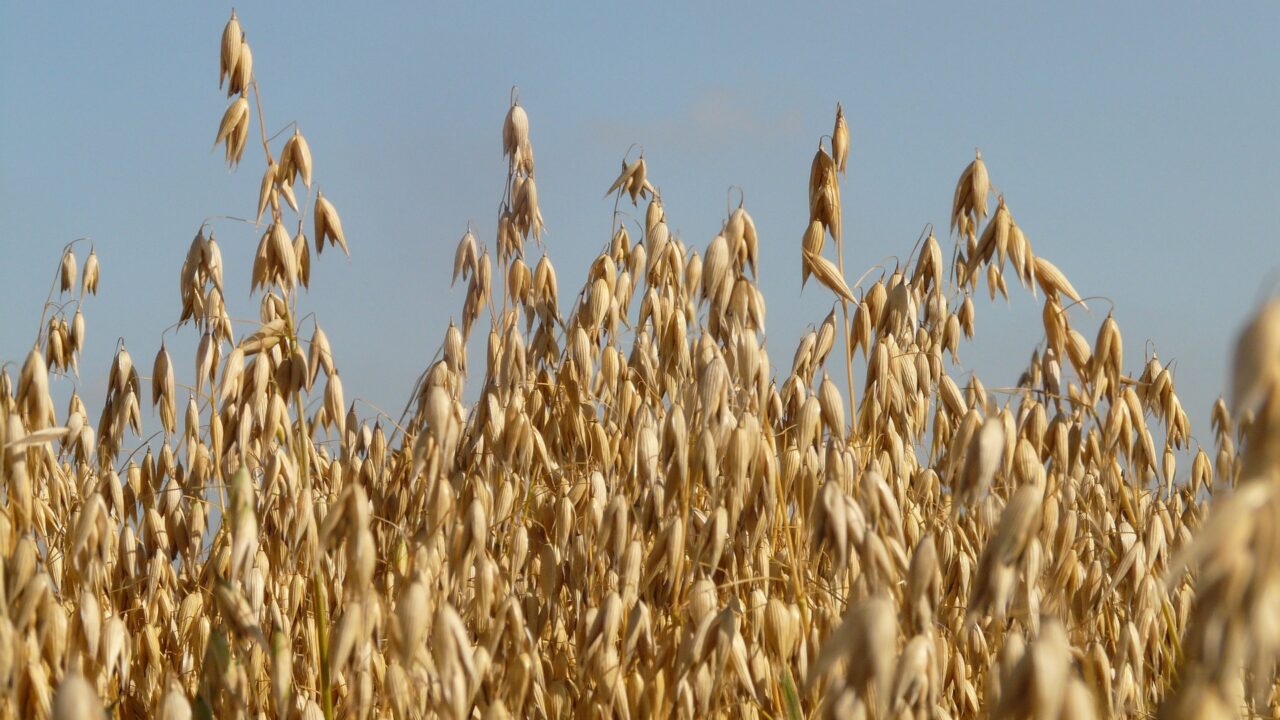Estimated at 207,000ha, the UK’s oat planted area for 2025 is up 13% year-on-year and now sits at the highest level since 2020, according to the Agricultural and Horticultural Development Board (AHDB).
Spring oat varieties account for an estimated 66% of the area, up one percentage point from 2024, with a corresponding decline in the share of winter oat varieties.
Most of the UK sees larger areas in 2025, AHDB noted, with the strongest rises in Northern England, West Midlands and Wales, and Scotland.
Meanwhile, Yorkshire and the Humber, and Northern Ireland, which have some of the largest recoveries in wheat area, see a year-on-year decline in oat area.
WPB Isabel remains the most prevalent oat variety with 27% of the area, followed by Mascani at 21%, Merlin at 16%, and Canyon at 14% of the total area.
Oats
According to AHDB, this upward trend in oats is set to continue.
Oats have become an increasingly attractive crop for UK farmers due to their compatibility with low-input, environmentally friendly rotations and their rising value in food markets.
The UK’s potential production of oats for the 2025/26 season could range from 1-1.2Mt.

On the demand side, 2024/25 human and industrial (H&I) consumption of oats was 5% below the previous five-year average, according to data recently released by AHDB.
This is partly due to reduced usage by millers driven by higher extraction rate because of better quality oats.
However, demand for oats in animal feed is on the rise, due to greater availability.
With another year of strong production likely, and higher than average carry-in stocks expected for 2025/26, the UK oat balance could be looking well supplied this season, especially with muted H&I uptake from the previous season.
H&I demand
However, there are signs H&I demand could pick up as the season progresses.
Earlier this year, Danone announced that Alpro, a leading plant-based drink manufacturer, will be using 100% British oats for its long-life oats drink and chilled oat drinks, with plans to expand this sourcing to its barista range in the future.
This follows a significant investment by the company aimed at supporting UK agriculture and expanding its plant-based product range.
Alpro’s oat drink production appears geared primarily toward the UK market, although further expansion or export opportunities could arise in future.
Producing oat milk requires about 90–100g/Lof oat flour, meaning Alpro’s planned 58 million litres would need around 5,800t of flour.
After processing to make flour, 28-32% of raw oat weight is lost as hull and around 10% can be lost during milling.
This means producing 5,800t of flour could require 8,000-9,500t of raw oats, depending on quality.

